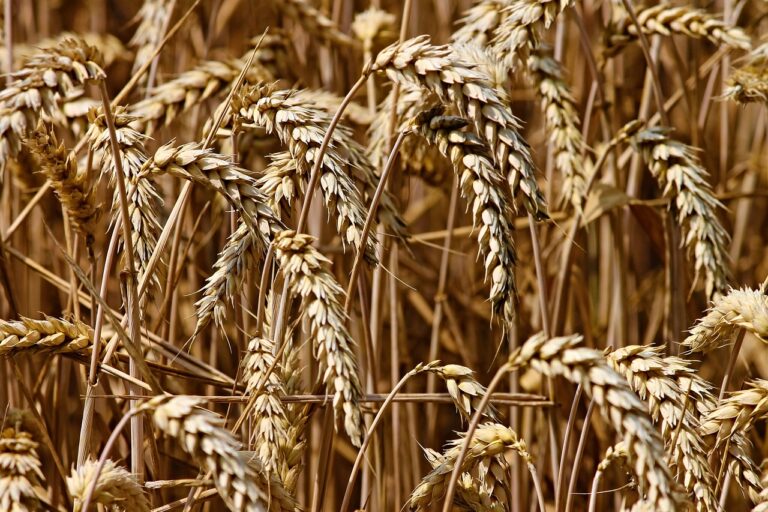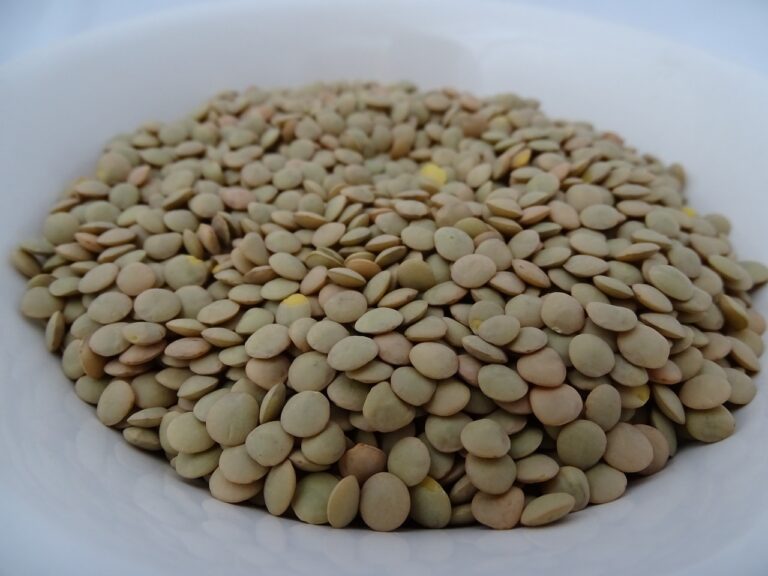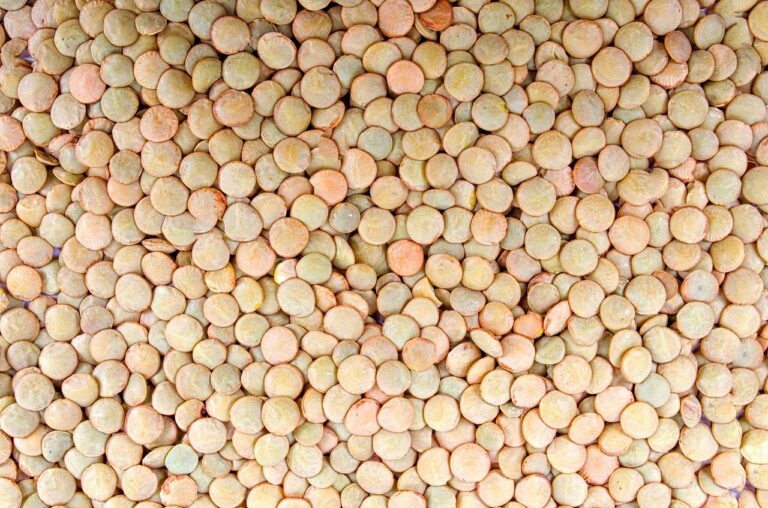Sorghum Farming in Kenya: Challenges & Opportunities.
Sorghum is a grain crop that has been grown in Kenya for centuries. It is an important source of food, animal feed, and income for many Kenyan farmers.
Sorghum is also known for its ability to adapt to harsh growing conditions, making it a popular choice among farmers who live in areas with limited rainfall. Sorghum is a versatile crop that can be used in many different ways.
For example, it can be used to make porridge, flour, bread, and even beer. It can also be used as animal feed or as a source of biofuel.
Despite its many uses and benefits, sorghum farming faces numerous challenges in Kenya. These challenges include pests and diseases, climate change, lack of access to credit and markets, poor infrastructure, and limited knowledge about best practices for sorghum cultivation.
In this article, we will explore the different aspects of sorghum farming in Kenya. We will discuss the ideal climate and soil conditions for sorghum growth, the varieties of sorghum grown in Kenya and their characteristics and uses; planting and harvesting best practices; natural pest control methods; irrigation techniques; market opportunities; common challenges faced by Kenyan farmers growing sorghum; and ways to overcome these challenges.
By the end of this article, you will have a better understanding of what it takes to grow sorghum successfully in Kenya. Whether you are an experienced farmer or just interested in learning more about the agriculture industry in this region of Africa – there’s something here for everyone!
Contents
Climate and Soil Requirements
The Ideal Climate for Sorghum Growth in Kenya
Sorghum is a hardy crop that can grow in various climatic conditions, making it suitable for cultivation in different regions across the globe. However, specific weather patterns are essential for optimal sorghum growth.
In Kenya, the ideal climate for Sorghum growth is an area with a mean temperature of 25 to 30 degrees Celsius, and an annual rainfall of between 500mm to 800mm. The rainfall should be well distributed throughout the growing season with little-to-no variation between months.
The Right Soil Conditions to Grow Sorghum in Kenya
Soil quality plays a crucial role in determining how well sorghum grows. The ideal soil type for Sorghum farming in Kenya is sandy loam soil with good drainage and high water-holding capacity. Soil pH should range from neutral to slightly acidic, around 6-7 pH.
Additionally, adequate levels of phosphorus, potassium, and nitrogen are necessary for optimal sorghum production. Most Kenyan soils are deficient in nutrients such as phosphorus and potassium; hence farmers must supplement the soil through organic or artificial fertilizers before planting Sorghum.
Kenya’s diverse climate means that farmers can grow different varieties of Sorghum depending on their region’s weather patterns. Farmers must also invest time in preparing their soils adequately before planting to ensure healthy yields at harvest-time by adding relevant nutrients or using organic practices such as crop rotation or green manure planting techniques that will quickly improve the soil quality over time.
Varieties of Sorghum Grown in Kenya
Different types of Sorghum grown in Kenya
Kenya is home to several varieties of sorghum, each with unique characteristics that make it suitable for different purposes. These include:
Red sorghum: This variety is commonly grown in Kenya and is easily recognizable by its deep red color. It’s mainly used for brewing beer and as animal feed.
White sorghum: As the name suggests, this variety has a white grain and is commonly used for making porridge, flour, and other food products. Brown sorghum: This variety has a brownish color and is popularly used in the production of gluten-free products such as bread, cookies, etc.
Dwarf Sorghum: This variety has a shorter height compared to other varieties of sorghum. It’s drought-tolerant and matures faster than other varieties making it ideal for areas with low rainfall.
Characteristics and uses of each variety
Each type of Sorghum has its unique characteristics that make it ideal for specific uses. Red sorghum, for example, is preferred by most Kenyan farmers due to its high yield potential.
White sorghum has a slightly sweeter taste than other varieties which makes it perfect for porridge or flour production. Brown Sorghum, on the other hand, contains high levels of antioxidants making it an excellent choice for health-conscious consumers.
When it comes to uses, red sorghum is mainly used in beer brewing while white Sorghums primary use is as food. Brown Sorghums gluten-free properties have made it a popular ingredient in baking products such as bread and biscuits.
The different varieties of sorghum grown in Kenya have unique characteristics that make them ideal for different purposes. Kenyan farmers should choose the type of Sorghum to grow based on market demand and soil suitability.
Planting and Harvesting
Best Practices for Planting Sorghum
When it comes to planting sorghum, there are a few best practices that Kenyan farmers should follow. First of all, the soil should be well-prepared before planting.
This means tilling the land and making sure that it is free from weeds and debris. Additionally, the seeds should be planted at a depth of about 2-3 inches in rows that are spaced about 20-30 inches apart.
It’s also important to make sure that the seeds are planted in moist soil to encourage germination. Farmers can help ensure successful growth by applying fertilizer to the soil before or during planting.
Timeframes for Planting and Harvesting
The best time to plant sorghum in Kenya is generally between March and May or September and November, depending on the region. Sorghum typically takes approximately 90-120 days to mature and be ready for harvesting after planting.
This means that if a farmer plants sorghum in April, they can expect a successful harvest in July or August assuming there were no setbacks during growth. One thing to keep in mind is that Sorghum may grow better at certain times depending on location; making it important for farmers everywhere to do research on what works best for their area before getting started!
Pest Control Measures
Common Pests that Affect Sorghum Growth in Kenya
As with any crop, sorghum is susceptible to pests that can cause significant damage to the plant. In Kenya, some of the most common pests affecting sorghum growth include sorghum midge, shoot fly, stem borer and aphids. The sorghum midge is a particularly troublesome pest as it can destroy an entire crop if not controlled early.
Natural Pest Control Methods to Minimize Damage
While pesticides are commonly used by farmers to control pests, there are also natural methods that can be adopted. One such method involves intercropping other crops such as legumes which release natural repellents that protect sorghum from pests. Another natural method involves using neem-based products which are derived from the neem tree and known for their insecticidal properties.
Farmers have also been known to use trap crops which are planted around the main crop and attract pests away from it. While pest control is an important aspect of growing sorghum in Kenya, it is essential for farmers to adopt sustainable pest management practices that minimize chemical use and promote biodiversity on their farms.
Irrigation Techniques
Proper irrigation is crucial for the growth and development of sorghum. It ensures that the plants receive enough water to thrive and produce a good yield. In Kenya, there are several irrigation techniques used by farmers to ensure the success of their sorghum crop.
Importance of Irrigation in Sorghum Farming
Typically, sorghum requires moderate water levels, particularly during its early stages of growth. However, during periods of drought or high temperatures, it may require more water to ensure optimal growth.
Proper irrigation plays an essential role in mitigating the effects of climate change on Sorghum farming in Kenya. Without enough water, sorghum plants may not grow as tall or produce as many seeds as they should.
Too much moisture can also lead to disease and fungal infections that may affect the yield negatively. As such, farmers must strike a balance between providing just enough water to promote optimal growth and avoiding over-watering that could lead to crop damage.
Different Irrigation Techniques Used By Kenyan Farmers
Kenyans use various irrigation methods depending on their location and access to resources such as water pumps and pipes. The most common method is surface irrigation; this involves flooding furrows with water sourced from nearby rivers or rainwater reservoirs. Plants absorb the necessary moisture via capillary action from these furrows.
Sprinkler irrigation is another technique where overhead sprinklers apply even amounts of water across the field. This method saves time for farmers who would otherwise have to manually irrigate their crops using watering cans or buckets.
Drip irrigation is another technique used by some Kenyan farmers; this involves slow-dripping water directly onto each plant’s roots using small tubes running along the field. This method saves water and ensures that each plant receives the right amount of moisture.
Overall, Sorghum farming in Kenya requires a mix of traditional and modern irrigation techniques to ensure optimal growth and yields. It’s important for farmers to understand the different methods available and choose an approach that meets their specific needs.
Market Opportunities
Overview of the local market demand for Sorghum products
Sorghum is a staple food item in many Kenyan households. It is used to make porridge, bread, and other traditional dishes.
Due to its high nutritional value, sorghum has gained popularity in recent years as a healthier alternative to other cereals. As a result, there is a high local demand for sorghum products in Kenya.
Local farmers have capitalized on this increased demand by producing sorghum in larger quantities. This has resulted in an increase in availability and affordability of sorghum products for the local Kenyan population.
Export opportunities for Kenyan farmers
In addition to the local market, there are also export opportunities available for Kenyan farmers who grow sorghum. Developed countries are showing increased interest in African-grown crops due to their organic nature and sustainable farming practices. Kenyan farmers can take advantage of this trend by exporting their surplus crops to international markets.
The main markets for sorghum exports include Europe, Asia, and North America. However, there are several challenges that need to be overcome before Kenyan farmers can fully realize the potential of these export opportunities.
These include meeting international standards and regulations regarding pesticide use and grading systems, as well as establishing efficient supply chains that can transport the produce safely across borders. Despite these challenges, there is great potential for Kenyan farmers to benefit from both local and international markets when it comes to growing sorghum.
Challenges Faced by Kenyan Farmers
Climate Change: A Growing Problem
Kenyan farmers face a significant challenge due to the effects of climate change. Erratic rainfall patterns, prolonged droughts, and other environmental hazards have made it difficult for farmers to predict when to plant and harvest their crops.
These unpredictable weather patterns have also made it difficult for farmers to choose the right seed varieties, leading to lower yields and lost income. In response to these challenges, Kenyan farmers are implementing innovative strategies such as soil conservation measures and alternative irrigation techniques that can help protect their crops from the impacts of climate change.
Lack of Access to Credit: A Major Roadblock
Many Kenyan farmers face a significant financial challenge when it comes to accessing credit. Lack of access to credit not only makes it difficult for farmers to purchase essential inputs like seeds, fertilizers, and pesticides but also makes it challenging for them to expand their acreage or invest in modern farming technology. To address this issue, some non-governmental organizations have partnered with banks in Kenya’s rural areas, providing small-scale loans at low-interest rates.
Poor Infrastructure: The Need For Better Roads And Storage Facilities
A lack of adequate infrastructure is another major challenge facing Kenyan farmers. Poor roads make it difficult for them to transport their products from farms into the market efficiently; hence they end up losing potential profits due lack of storage facilities which would allow them hold onto their products without spoiling until they find better prices in the market .
This limits both access and consumption options for many people in rural Kenya who depend on sorghum as a staple food crop. Therefore better transport infrastructure is needed so that traders can easily be able reach different markets without delay and better storage facilities could be introduced so that surplus product could be preserved well before getting spoilt or becoming of less quality.
Conclusion
After delving into the world of Sorghum growing in Kenya, it is clear that this crop plays a vital role in the country’s agricultural landscape. With its drought-resistant properties and versatility in usage, Sorghum is an ideal crop for farmers to grow, even in challenging environments. Throughout this article, we have explored the ideal climate and soil conditions for Sorghum growth in Kenya as well as the different varieties grown locally.
We have also discussed best practices for planting and harvesting Sorghum and natural pest control methods to minimize damage. Furthermore, we have touched on the importance of irrigation techniques and how they benefit Sorghum farming in Kenya.
Moreover, we’ve identified market opportunities for Kenyan farmers to explore while highlighting some of the challenges they face when growing sorghum. While there are certainly challenges associated with growing Sorghum in Kenya; farmers who put forth effort and adopt best practices can make a decent living from the crop.
Industrial efforts to adapt new technologies such as precision agriculture would further support farmers to increase their yields. By prioritizing these practices over time together with financial incentives will encourage more Kenyan Farmers to venture into sorghum cultivation which will foster economic growth even more.





